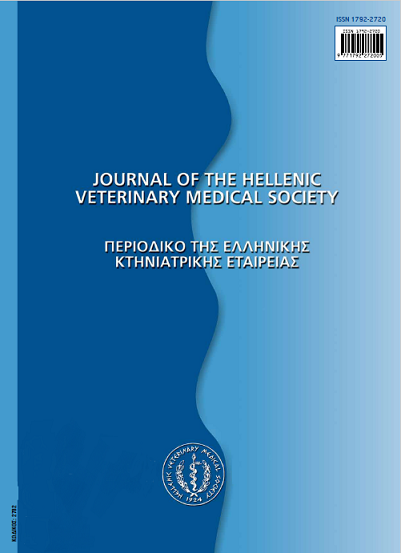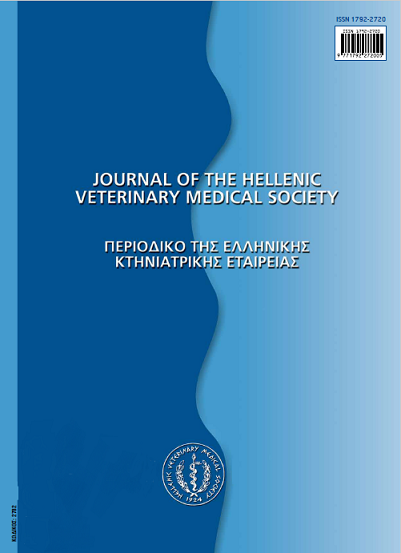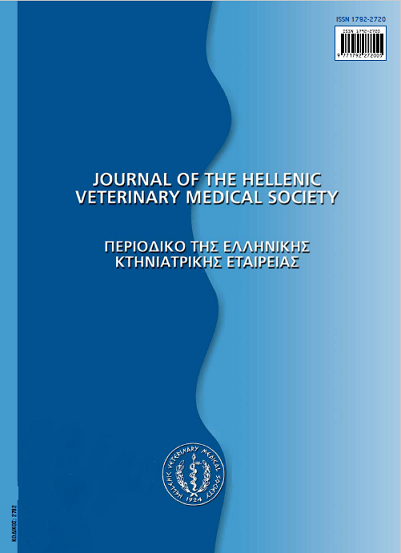New aspects on canine spirocercosis
Abstract
Spirocerca lupi is a nematode parasite of carnivores affecting mainly the dog. Although S. lupi infection is often asymptomatic, esophageal granulomas and/or sarcomas, aortic aneurysms, thoracic discospondylitis or spondylosis deformans, hypertrophic osteopathy and salivary gland necrosis may be detected in various combinations upon the necropsy of dogs, originating from the endemic areas. When spirocercosis turns symptomatic, regurgitation, vomiting, odynophagia, hypersalivation, progressive loss of body weight, dyspnea and episodic melena are the most common clinical signs noticed. Diagnosis will be confirmed by fecal examination (egg detection), using flotation or sedimentation techniques, thoracic radiography (posterior mediestinal mass, vertebral lesions) and especially esophagoscopy, which allows the direct visualization of S. lupi nodules either granulomatous or neoplastic. Avermectins, such as doramectin and ivermectin, have been emerged as promising medications in the treatment and possibly in the prevention of canine spirocercosis. Their use, in both the spontaneous and experimental disease, has resulted in the remission of esophageal dysphagia, complete or partial regression of esophageal parasitic granulomas and cessation of egg shedding.
Article Details
- Zitationsvorschlag
-
MYLONAKIS (Μ.Ε. ΜΥΛΩΝΑΚΗΣ) M. E., KOUTINAS (Α.Φ. ΚΟΥΤΙΝΑΣ) A. F., & RALLIS (Τ. ΡΑΛΛΗΣ) T. (2017). New aspects on canine spirocercosis. Journal of the Hellenic Veterinary Medical Society, 54(4), 347–350. https://doi.org/10.12681/jhvms.15344
- Ausgabe
- Bd. 54 Nr. 4 (2003)
- Rubrik
- Review Articles
Authors who publish with this journal agree to the following terms:
· Authors retain copyright and grant the journal right of first publication with the work simultaneously licensed under a Creative Commons Attribution Non-Commercial License that allows others to share the work with an acknowledgement of the work's authorship and initial publication in this journal.
· Authors are able to enter into separate, additional contractual arrangements for the non-exclusive distribution of the journal's published version of the work (e.g. post it to an institutional repository or publish it in a book), with an acknowledgement of its initial publication in this journal.
· Authors are permitted and encouraged to post their work online (preferably in institutional repositories or on their website) prior to and during the submission process, as it can lead to productive exchanges, as well as earlier and greater citation of published work.












